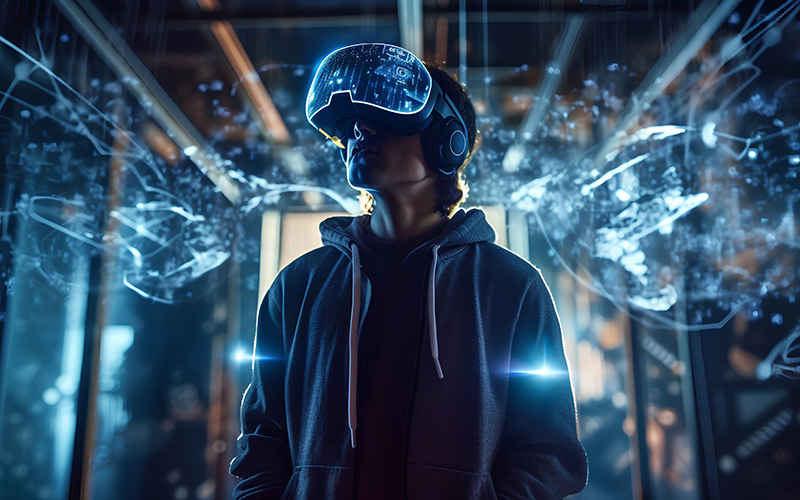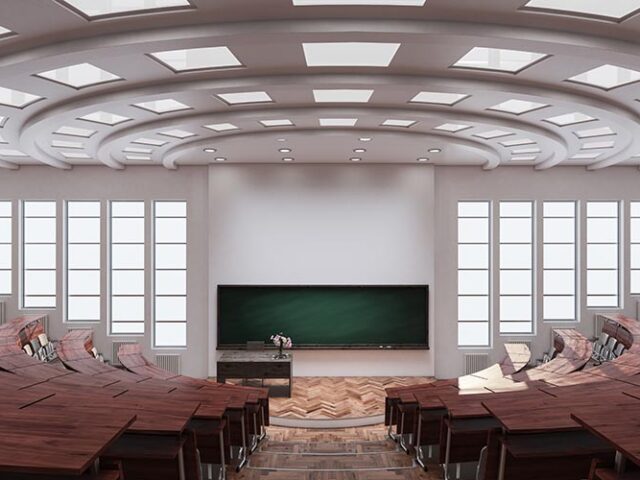In the vast landscape of emerging technologies, Augmented Reality (AR) and Virtual Reality (VR) have emerged as captivating and transformative innovations.
These immersive technologies are no longer confined to the realm of science fiction but have become powerful tools with real-world applications, revolutionising various engineering and tech disciplines. As we embark on this exploration of AR and VR, we will witness their impact across industries and emphasise their significance for students preparing for their future careers.
Enhancing disciplines
AR and VR have transcended the novelty they once had and are now driving major advancements in diverse fields – some more expectedly than others.
The realm of engineering has been transformed by the immersive potential of AR and VR. From enhancing design and prototyping through virtual simulations to utilising AR for maintenance and training in complex engineering systems, these technologies offer unprecedented possibilities for the industry. Engineers now collaborate with AR visualisation tools, enabling a deeper understanding of data and facilitating better decision-making in projects.
In the realm of education and training, AR and VR have brought about a paradigm shift. Traditional methods are evolving into immersive learning experiences, where students can interact with virtual environments, thus bolstering their comprehension of complex concepts. Professionals in high-risk industries benefit from training simulations in VR, reducing potential hazards while ensuring they are well-prepared for real-world challenges.
The entertainment and gaming industries have experienced a complete metamorphosis, thanks to AR and VR. Gamers now immerse themselves in virtual worlds that not only entertain but also allow them to actively participate in storytelling, with the industry showing no signs of slowing down. Augmented Reality has brought gaming into the real world, enabling location-based experiences that merge the digital and physical realms, just think about the Pokémon: Go storm of recent years.
The real-world applications of AR and VR
The healthcare industry has seen significant transformations due to the adoption of AR and VR. Surgeons benefit from VR-based surgical simulations and training, refining their skills in a risk-free environment. Augmented Reality assists medical professionals during procedures, providing real-time data visualisation and guidance. Virtual therapy and rehabilitation programs have also proven effective, in promoting recovery and well-being.
In architecture and real estate, AR and VR have revolutionised the way professionals conceptualise and present designs. AR visualisation tools allow architects to overlay virtual models onto real-world spaces, aiding clients in understanding the final outcome before construction commences. Virtual reality offers potential buyers the opportunity to explore properties through 360-degree walkthroughs, creating a highly immersive and convenient experience.
Virtual Reality also plays a vital role in engineering, particularly in product design and simulation. Engineers can use VR to create virtual prototypes of products and interact with them in a realistic, immersive environment. This allows them to visualise and evaluate the design from different angles, detect potential flaws, and make improvements before physical prototyping. Virtual simulations enable engineers to test the performance of products under various conditions and optimise their designs without the need for costly physical prototypes.
Additionally, AR can be used for maintenance and troubleshooting purposes. When technicians need to inspect and repair complex machinery or equipment, AR overlays can provide detailed maintenance procedures and diagnostic data directly on the equipment’s surface. This can help technicians quickly identify issues, access relevant documentation, and carry out repairs efficiently.
The importance of AR and VR for students
Understanding the significance of AR and VR is crucial for students as they prepare for their future careers.
AR and VR have become key players in various industries, and students need to be aware of their significance in the job market. As these technologies continue to shape multiple sectors, professionals with AR and VR expertise are in high demand. Embracing these technologies opens up opportunities for innovation and entrepreneurship, allowing students to contribute meaningfully to the world of tech-driven solutions.
Moreover, AR and VR demand transdisciplinary skills, encouraging students to collaborate across various fields. As industries seek innovative solutions, professionals who can combine knowledge from different disciplines will be highly valued. Additionally, an understanding of AR and VR equips students to adapt to an ever-evolving job market, ensuring they remain relevant in the face of emerging technologies.
Educational institutions play a crucial role in preparing students for a future driven by AR and VR. Integrating these technologies into educational curricula and offering specialised courses provide students with hands-on experience and the knowledge needed to excel in AR and VR-related fields.
Final thoughts
AR and VR have transcended the realm of imagination in recent years and are now becoming actively embedded in our lives and industries. From engineering to healthcare, from gaming to the sciences, its impact is undeniable. Students must recognise the significance of AR and VR in their career paths, as these technologies hold the key to innovation and advancement across diverse sectors. By understanding and embracing AR and VR, students can chart a course towards a future filled with boundless opportunities and impactful contributions to society.




